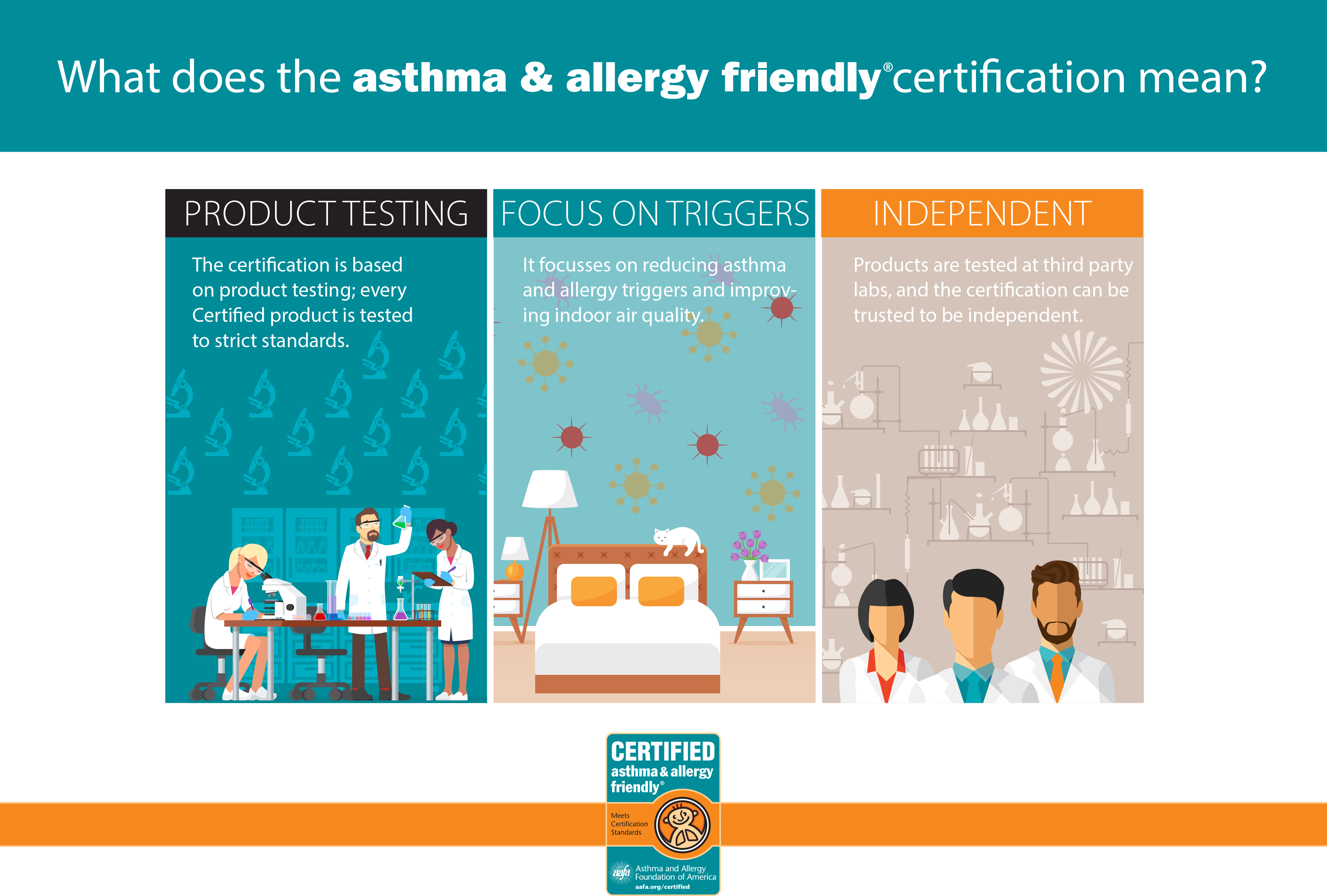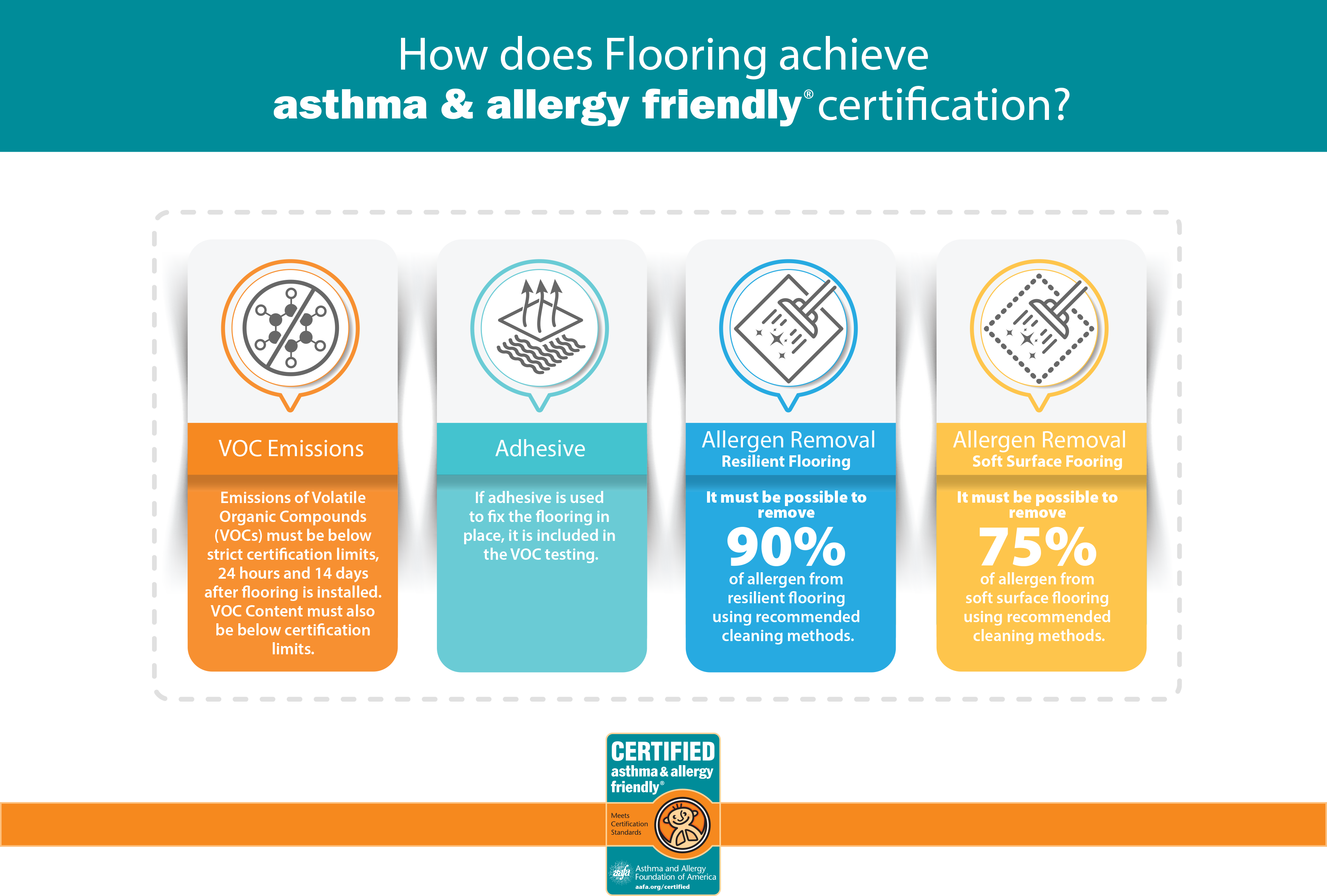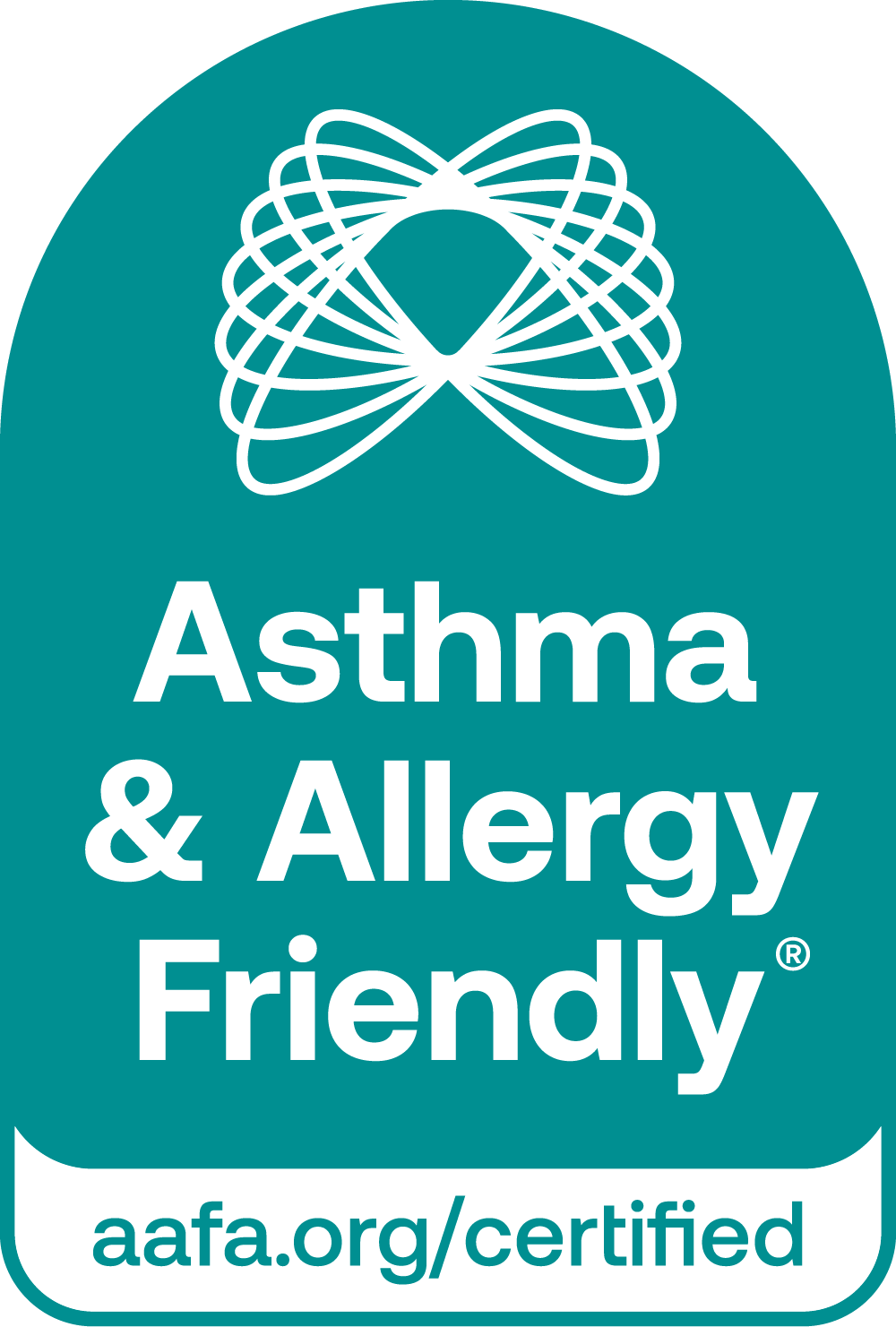Choosing flooring that supports healthier indoor air quality is particularly important for those with asthma or allergies, but it benefits everyone
In an era where well-being is front and center, designing interiors that support health and wellness has become more than just a trend—it’s a core element of modern living. With over 100 million Americans affected by asthma and/or allergies, maintaining good indoor air quality (IAQ) is now a priority for many homeowners. Choosing flooring that supports healthier IAQ is particularly important for those with asthma or allergies, but it benefits everyone.
Flooring plays a significant role in either supporting or detracting from the air quality inside your home. As we recognize October as Indoor Air Quality Awareness Month, it’s important to understand how the flooring choices you make can impact your indoor environment.
Let’s dive into why IAQ affects our health, how flooring influences IAQ, and why it’s crucial to select flooring that has been independently tested and certified for better air quality.
Why Indoor Air Quality Matters
Research shows that indoor air can be up to five times more polluted than outdoor air. This is concerning because most of us spend around 90% of our time indoors. Dust mite allergen, pet dander, pollen, and mold spores are common indoor triggers that can exacerbate asthma and allergies. Additionally, Volatile Organic Compounds (VOCs)—chemicals that off-gas from flooring and other building materials, cleaning products, and furniture—can further worsen the air we breathe.
For individuals with asthma or allergies, exposure to these pollutants can trigger reactions such as wheezing, coughing, and asthma attacks. Even for those without pre-existing conditions, poor IAQ can cause headaches, dizziness, respiratory irritation, and long-term health problems. Ensuring healthier IAQ is critical for everyone in the household, and flooring is one area where meaningful improvements can be made.
How Flooring Impacts Indoor Air Quality
Flooring, as one of the largest surfaces in any home or building, can have a significant influence on IAQ. Different types of flooring materials can either contribute to the build-up of allergens and pollutants or help maintain a cleaner environment. Here’s how flooring can affect IAQ:
- VOCs from Flooring Materials: Many flooring products and any associated adhesives or chemical treatments can release VOCs into the air. Exposure to these compounds can cause respiratory irritation, headaches, and more severe health risks over time.
- Allergen Traps: Flooring can trap dust, pet dander, pollen, and mold, which can become airborne when disturbed. If not regularly and thoroughly cleaned, these allergens can accumulate and negatively affect IAQ. Hard-surface flooring, such as wood, tile, or vinyl, may not trap allergens as easily, but it’s still important to select materials that are easy to clean and maintain. Additionally, sticky allergen particles can be more difficult to remove from some types of flooring during cleaning.
- Moisture and Mold Growth: Certain flooring materials, especially in humid environments, can absorb moisture and foster mold and mildew growth. Mold spores are a major concern for individuals with allergies and asthma, as they can easily become airborne and trigger allergic reactions or asthma symptoms.
- Dust and Particulate Matter: Dust and other particulate matter often settle on flooring surfaces, and foot traffic or activity in a room can stir these particles back into the air. Routine cleaning is essential to keep these particles from impacting IAQ.
Why Choosing Independently Verified and Validated Flooring Matters
With a growing focus on health and wellness, many homeowners are now searching for flooring materials that not only look good but also contribute to a healthier living environment. However, the lack of strict regulations around health claims on household products has led to a flood of marketing terms like “eco-friendly,” “green,” and “low VOC,” making it difficult for consumers to know which products genuinely support better IAQ.
This is where third party testing and certification become crucial. Choosing flooring that has been independently tested and verified helps ensure that the product meets strict standards for IAQ. One trusted certification is the Asthma & Allergy Friendly® Certification Program, which certifies products that are scientifically proven to reduce exposure to indoor allergens and support better IAQ.
How the Asthma & Allergy Friendly® Certification Program Certifies Flooring

Developed by Allergy Standards Ltd. (ASL) in collaboration with the Asthma and Allergy Foundation of America (AAFA), the Asthma & Allergy Friendly® Certification Program tests and certifies products, including flooring, to ensure they are more suitable for individuals with asthma and allergies.
Certification of flooring by this program goes beyond simple claims and involves rigorous testing that simulates real-life conditions to ensure that Certified products contribute to a healthier indoor environment for everyone. These tests evaluate the flooring’s impact on IAQ over time. A balanced approach is taken when certifying products, testing for VOCs and chemicals to identify flooring that does not contain unnecessarily harmful materials. Additionally, any necessary chemicals that could cause an allergic reaction are kept at the lowest levels required for functionality.
Here’s how the program certifies flooring:
- VOC Emissions Testing: The program measures the amount of VOCs emitted by flooring products, ensuring they fall within strict safety limits. This testing includes VOCs from both the flooring material and any adhesives used during installation. Unlike other certifications, the Certification Program goes further by assessing emissions during installation and over time, testing levels after both 24 and 336 hours to ensure they remain low.
- Allergen Removal Testing: Certified flooring must demonstrate that it is easy to clean and maintain, reducing the build-up of allergens like dust, pet dander, and pollen. The program tests whether standard cleaning methods can remove at least 90% of allergens from the flooring surface and ensures that cleaning doesn’t release more allergens into the air. Common household allergens, like dust mite and cat allergens, are used in testing.
The Asthma & Allergy Friendly® Certification Program certifies both resilient and soft surface flooring. Resilient flooring includes luxury vinyl flooring, sheet vinyl flooring, vinyl tile, linoleum, and sports flooring.
Traditionally, some textile or soft surface flooring have been considered to trap allergens that could easily become airborne and cause issues. However, new advancements in flooring technology now allow you to enjoy the comfort of soft surface flooring with the easy-to-clean and durable benefits of hard flooring. Certified Asthma & Allergy Friendly®soft flooring is rigorously tested with real allergens. To earn certification, it must be proven that standard cleaning can remove at least 75% of allergens from the surface while keeping airborne particles low. This means you can have the comfort of a soft surface without compromising healthier IAQ.
Notably, Certified Asthma & Allergy Friendly® resilient and textile flooring aligns with the U.S. Green Building Council’s (USGBC) LEED program and is eligible for credits for low-emitting materials. Additionally, Certified flooring is compliant with WELL Feature X06 Part 1b4 of the WELL Building Standard. This ensures that creating healthier homes also supports sustainability, so you can enjoy spaces that are not only comfortable but also better for the environment.

Flooring Options for Healthier Living Spaces
Choosing the right flooring can make a significant difference in maintaining good IAQ. Here are a few common flooring types and their impact on IAQ:
- Hardwood Flooring: Hardwood is a popular choice because it doesn’t trap allergens and is easy to clean. However, dust and debris can settle in the gaps between floorboards, so regular maintenance is key.
- Tile and Stone Flooring: These options are non-porous and don’t trap allergens, and in this way are a great choice for those with allergies. However, grout lines between tiles can accumulate dirt and allergens, so cleaning the grout is essential.
- Vinyl Flooring: Vinyl is easy to clean and doesn’t trap dust or allergens, but some types can emit VOCs. Choosing certified low-VOC vinyl flooring can help mitigate this issue.
- Carpet: As mentioned above, while traditionally viewed as less desirable for those with asthma and allergies, there are some hybrid, textile-based flooring types that are engineered to give the comfort of traditional carpet with the cleanability of resilient flooring. A low pile is important for allergen removal, as is a backing material that prevents build-up of dust and allergens below the flooring.
Conclusion
As the number of people with asthma and allergies continues to rise, so does the need for healthier living spaces. Flooring plays a crucial role in determining the air quality inside your home, and selecting Certified Asthma & Allergy Friendly® flooring ensures that your home supports better IAQ for everyone to enjoy.
This Indoor Air Quality Awareness Month, take the time to consider the flooring options in your home and make informed choices that can lead to a healthier living environment for you and your loved ones.
